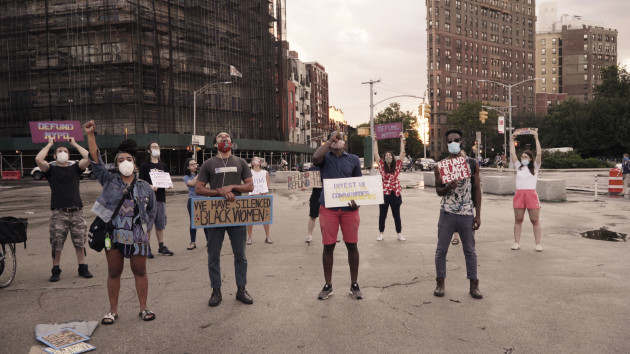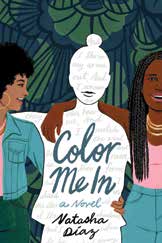Tag : racial justice
February 2, 2021 by admin
Ten Things to Remember for Black History Month… and Beyond
I love love love Black History Month. I love being intentional about pausing and reflecting on Black beauty, Black joy, and Black resilience, all of which is synonymous with Black history. I love being reminded of the Black food, Black music, and Black wisdom that has sustained us through the generations.
And as Jews prepare for Black History Month observations and celebrations this year I want to invite non-Black Jews to remember some things:
(more…)- No Comments
October 23, 2020 by admin
We’ve Been Waiting for Your Call for 70 Years
The Civil Rights and Restorative Justice Project works with law students, building an archive of the murders of African Americans in the Jim Crow South from 1930 to 1970. We gather the documents, case by case; each case telling a story of violence and impunity that is nowhere to be found in our history books. We then work with the families of the victims to seek acts of restorative justice in the communities where these murders occurred. CRRJ has helped families put up markers, have streets renamed at the site of the killings, consecrate gravestones over unmarked burial sites. We have held public ceremonies with police chiefs and mayors apologizing to the family survivors or descendants for the acts of their predecessors. We have provided the documents for historical exhibits in town halls and libraries. But most of all, we are building an archive so that a new, fuller account of these painful truths can be forever sealed into the telling of American history.
Every day I’m guided in this restorative justice work by the themes, metaphors and images of the Jewish season of repentance. Take cheshbon hanefesh, an accounting of the soul. Our archive is a balance sheet detailing the crimes and our impunity; each case, a liability and a debt owed. There cannot be a reconciliation without recognition and acknowledgement of the total amount of what our society owes, how we have profited from the harms inflicted on others, and how our assets have roots in injustice.
Or take the image of teshuvah, the turning we are asked to do to face our fellow human beings to ask for forgiveness during the Days of Awe, and of God on Yom Kippur. Forgiveness is not a given; it is in the hands of those who have been harmed. But it is in our power to ask to be forgiven. Our tradition tells us that forgiveness does not come unless we make the first move to ask.
What does it take to turn towards those whom we have harmed? To repent as a community for our history of racial murders, we have to take a hard stop, raise our eyes to see where we as a nation have been and what has been done, decide to move towards a different way of behaving, and then act to live up to our vow. Repentance is a process that culminates in the movement of turning.
Our prayers, with the multiplicity of confessions in repeated acrostics from aleph to taf, [from a to z] all in the first person plural, help us understand that we all share in the responsibility to make things right in the public sphere. To ask for forgiveness, we have to first say out loud what wrongs we have committed. Not just keep them in our thoughts, but proclaim them in a space where others hear our confession, and we acknowledge our collective responsibility for repair.
A family member of one of the murdered once told us: “We’ve been waiting for your call for 70 years.” If forgiveness is ever to come, it has to start somewhere, and our liturgy teaches us that it must start with us. We have to make the call.
Rose Zoltek-Jick teaches at Northeastern University School of Law, where she is also the Associate Director of the Civil Rights & Restorative Justice Project.
- No Comments
July 28, 2020 by admin
Why We’re Doing Public Teshuvah to Fight White Supremacy

Photo by Hannah Roodman
Heading to Grand Army Plaza at 7:20 pm. Seeing a group start to gather, forming a circle. Picking up the protest sign that speaks to me from the middle of the circle. Finding a place in the circle to stand and hold up the sign. Stepping into the center to share what aspect of systemic racism I am mourning that day. Or, stepping into the circle to confess how I myself have participated in and perpetuated racism and anti-Blackness. Actively listening. Turning my body East at 8:00 pm. Blowing the shofar for one long breath. Hearing those around me cry out to the Heavens. Standing silently for a moment. Turning back to face the circle. Stepping into the circle again, this time to share a specific way that I will be actively anti-racist moving forward —my commitment to this community. Actively listening. Putting the protest sign back in the middle of the circle. Saying hello to friends and community members. Returning home.
- No Comments
July 27, 2020 by admin
Now. Next.
A cross-section of activists and thinkers weigh in on the present and its future— what perils we face, and what we might build from this epidemiological, social and political crisis.
- No Comments
January 16, 2020 by admin
A White-Passing Black Jew in NYC, via YA Fiction

As a Black Jewish woman, it feels inevitable that whenever a book comes out about being Black and Jewish, someone’s going to tell me to read it. So when someone asked me to review Color Me In by Natasha Diaz, I was skeptical. Usually these books are not actually written for me—they are written to explain me to other people. As I began to read Color Me In that was my initial impression: Another way to explain “other” to the mainstream gaze rather than a celebration of identity without the burden of explanation. But, as I was happy to discover, the book is much more than that.
The book is Diaz’s semi-autobiographical novel for young adult readers about growing up as a white-passing Black Jew in New York City. The beginning of 15-year-old Neveah’s journey reads very much like one of those “explaining” books. Neveah has moved from her father’s cushy home in the suburbs to her mother’s family home in Harlem, and we follow along as she experiences Black church and family life for the first time. Neveah cannot seem to find her voice and is often silent when it matters most. Her Black cousins are impatient with her hesitation to speak out on their behalf when she’s deemed more attractive by dint of her lighter skin. Will Neveah learn to speak her truths?
But Diaz’s story hits its stride as Neveah finds her mother’s journal and begins to unwind the history of promises, broken trust and trauma that lead to Neveah’s present circumstances. It’s fitting that one of the most vibrant characters in the book is New York City itself, complete with paternal bodega owners, gossiping church mothers and student rabbis. Learning to live in a city that eats and prays in so many languages is a key that unlocks Neveah’s ability to speak.
There were so many elements of Diaz’s story that resonated with my own childhood: Does being Jewish make me less black? (Nope.) Is it my job to explain Jews to Black folks, or Black folks to Jews? (Hell no). Can these disparate parts of my family communicate across race and class barriers? (If they want to.) Does my light skin require me to speak up more, or less? (Depends on who is in the room.)
I cried as the story culminated in a ritual in which open mic nights and church choirs intertwined with b’nai mitzvahs and bubbes to create a ceremony which is distinctly, beautifully necessary. As more Black and Brown people become visible within American Judaism, the recognition and creation of rituals by and for us is everything. Thank you Natasha Diaz for seeing us, for being us—and for writing this book.
Autumn Leonard is an anti-racism trainer and facilitator who creates high-quality, child-centered programming that furthers racial justice; she also teaches yoga in NYC schools through the Urban Yoga Foundation. She says, “I inherited a love of equality from my parents, who braved laws against interracial marriage and got legally hitched in 1960.”
- No Comments
 Please wait...
Please wait...